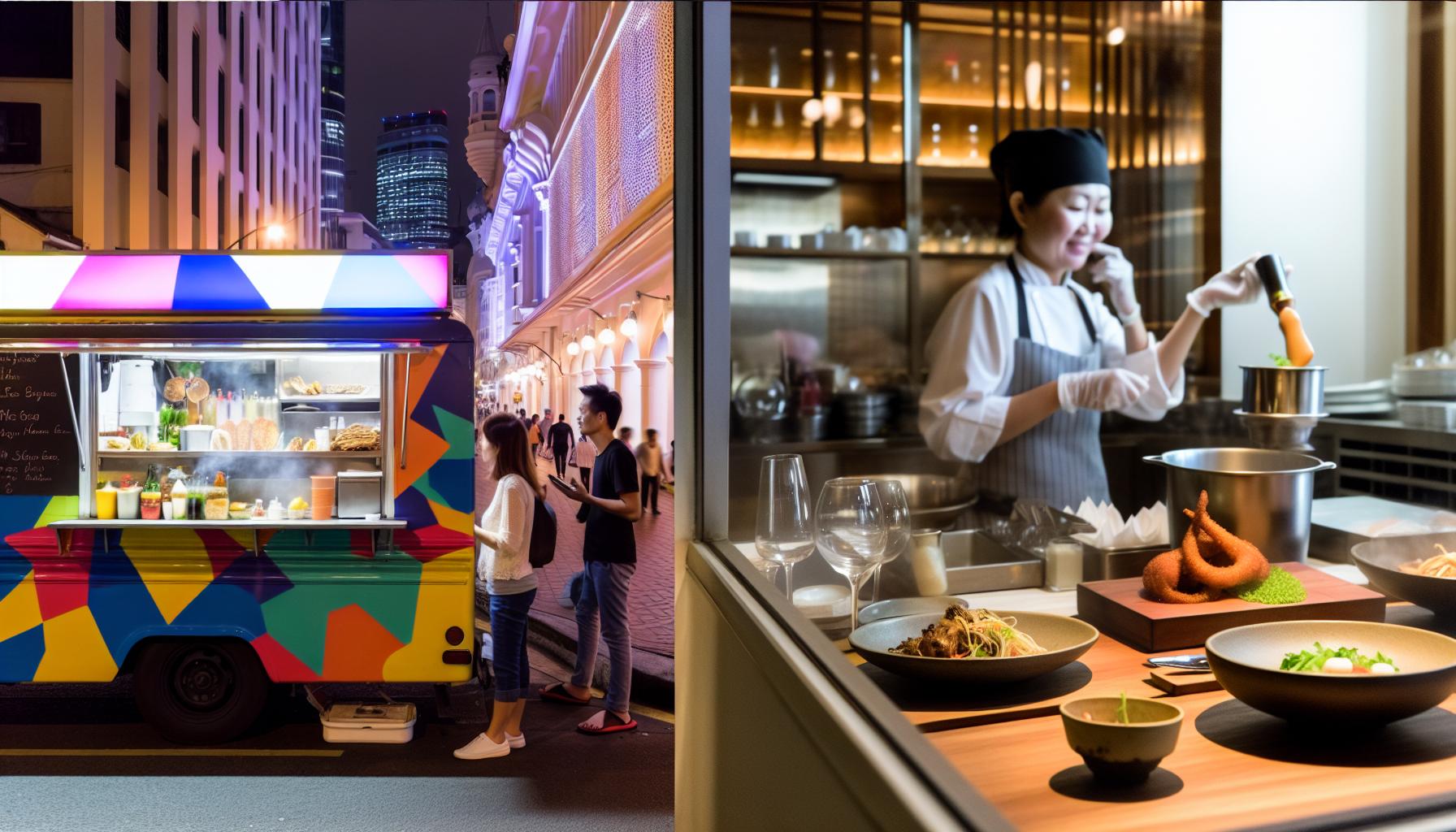When considering the world of food entrepreneurship, the battle of Food Truck vs. Restaurant often comes to the forefront. Each business model has its unique perks and challenges, catering to different entrepreneurial spirits and market demands. Whether you’re dreaming of cruising the streets with culinary delights or establishing a permanent spot for food lovers, understanding the distinctions between a food truck and a restaurant is crucial to making an informed decision. Let’s dig into the key aspects of each model and help you determine which one is right for you!
Initial Investment: The Cost of Entering the Fray
One of the most significant differences between a food truck and a restaurant is the initial investment required to get started. A food truck typically demands a lower upfront cost compared to a brick-and-mortar establishment. Consider the following:
- Food Truck: Costs can vary widely, but you might spend anywhere from $20,000 to $100,000 on a new or used vehicle, along with initial supplies and permits.
- Restaurant: Expect to invest anywhere from $250,000 to several million dollars, depending on location, size, and concept. Costs include leasing a space, renovations, equipment, and initial inventory.
For example, consider the food truck operation known as ChefsRoll, which began with a modest investment compared to traditional restaurants. Many food truck entrepreneurs emphasize lower barriers to entry as a key factor in their choice of business model.
Operational Flexibility: Move it or Lose it?
The geographical flexibility offered by a food truck can be its trump card. Being able to pivot your location based on foot traffic, events, or seasons is a significant advantage. Here’s a breakdown:
- Food Truck: You can change locations, participate in festivals and farmer’s markets, or target high-traffic areas. This flexibility allows for testing different markets without long-term commitments.
- Restaurant: The location is usually fixed, which can limit your ability to reach new customers. However, establishing a strong brand presence at a single location can build loyalty.
Restaurants like Craft Restaurant have capitalized on a solid location and brand identity, but food trucks like The Halal Guys show how mobility can appeal to a broader audience.
Operational Hours: Time On Your Side
Your business hours can greatly differ based on your model. Let’s dig into the time commitment required for each:
- Food Truck: Operators can often choose hours that best fit their lifestyle. Open for lunch, dinner, or special events — you decide!
- Restaurant: Expect to commit to longer, more consistent hours, such as lunch and dinner service. Owners often work grueling shifts, especially during busy weekends.
Imagine the joy of ditching the 9-to-5 grind for flexible hours that a food truck can offer, while also considering the camaraderie of a restaurant team. Many food truck owners say the flexibility allows for a healthier work-life balance.
Market Demand: KISS (Keep It Simple, Stupid)
Understanding your target audience and their preferences is essential. Each model attracts different consumer segments, which can impact your offerings:
- Food Truck: Ideal for fast-casual options, gourmet street eats, or niche cuisine. Customers often seek a quick, flavorful experience without a sit-down meal.
- Restaurant: Suitable for more elaborate dishes, dining experiences, or family-style meals. Restaurants can offer a full-service experience catering to those wanting to enjoy a leisurely meal.
The food truck scene has exploded with specialized cuisine like gourmet tacos from Kogi BBQ, while restaurants like The Cheesecake Factory thrive on providing diverse and comprehensive menus.
Marketing Strategies: The Social Spectrum
Marketing for your food business will depend heavily on your selected model. Each has its approach to promoting the food brand:
- Food Truck: Utilize social media platforms like Instagram and Twitter to announce your location and special events. Engaging online allows customers to find you easily.
- Restaurant: Employ traditional and digital marketing, including local advertising, website SEO, and loyalty programs to attract and retain guests.
A perfect example is how Gyrotonic uses social media to announce daily specials, while cutting-edge restaurants frequently leverage Google Ads and local SEO to boost visibility.
Hiring Considerations: Staff to Impress
Staffing is another differentiator between the two models. Food trucks tend to have a leaner team:
- Food Truck: Generally requires minimal staffing — often just one or two people can manage the entire operation.
- Restaurant: Needs a more extensive team, from chefs to waitstaff, which can lead to additional managerial responsibilities.
Food trucks understandably can emphasize unique and creative menus with smaller teams, while restaurants like Paladar showcase their diversity with larger staff, enabling a greater range of culinary delights.
Final Thoughts: Making the Right Choice
When evaluating Food Truck vs. Restaurant, it’s essential to consider your budget, time commitment, and the kind of dining experience you wish to offer. These factors, combined with your brand vision and market demand, will ultimately guide your decision. Are you ready to hit the open road and serve delicious meals from a mobile kitchen, or does the idea of curating a dynamic dining experience in a fixed space reel you in?
Remember, whether you choose a food truck or a restaurant, passion for food and customer satisfaction is key. Regardless of the path you take, your culinary journey can be just as adventurous and fulfilling. So get out there and start cooking up your success!


